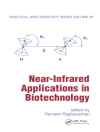The occurrence of a wide variety of metal-carbon bonds in living organisms, ranging from bacteria to humans, is only recently recognized. Of course, the historical examples are the B12 coenzymes containing cobalt-carbon bonds, but now such bonds are also known for nickel, iron, copper, and other transition metal ions. There is no other comparable book; MILS-6, written by 17 experts, summarizes the most recent insights into this fascinating topic.
Table of Content
From the Content:
• Organometallic Chemistry of B12 Coenzymes
• Cobalamin- and Corrinoid-Dependent Enzymes
• Nickel-Alkyl Bond Formation in the Active Site of Methyl-Coenzyme M Reductase
• Nickel-Carbon Bonds in Acetyl-Coenzyme A Synthases/Carbon Monoxide Dehydrogenases
• Structure and Function of [Ni Fe]-Hydrogenases
• Carbon Monoxide and Cyanide Ligands in the Active Site of [Fe Fe]-Hydrogenases
• Carbon Monoxide as Intrinsic Ligand to Iron in the Active Site of [Fe]-Hydrogenase
• The Dual Role of Heme as Cofactor and Substrate in the Biosynthesis of Carbon Monoxide
• Copper-Carbon Bonds in Mechanistic and Structural Probing of Proteins as well as in Situations where Copper Is a Catalytic or Receptor Site
• Interaction of Cyanide with Enzymes Containing Vanadium, Manganese, Non-Heme Iron, and Zinc
• The Reaction Mechanism of the Molybdenum Hydroxylase Xanthine Oxidoreductase: Evidence Against the Formation of Intermediates Having Metal-Carbon Bonds
• Computational Studies of Biooganometalllic Enzymes and Cofactors
About the author
Helmut und Astrid Sigel, University of Basel, Switzerland. Roland K. O. Sigel, University of Zürich, Switzerland.












